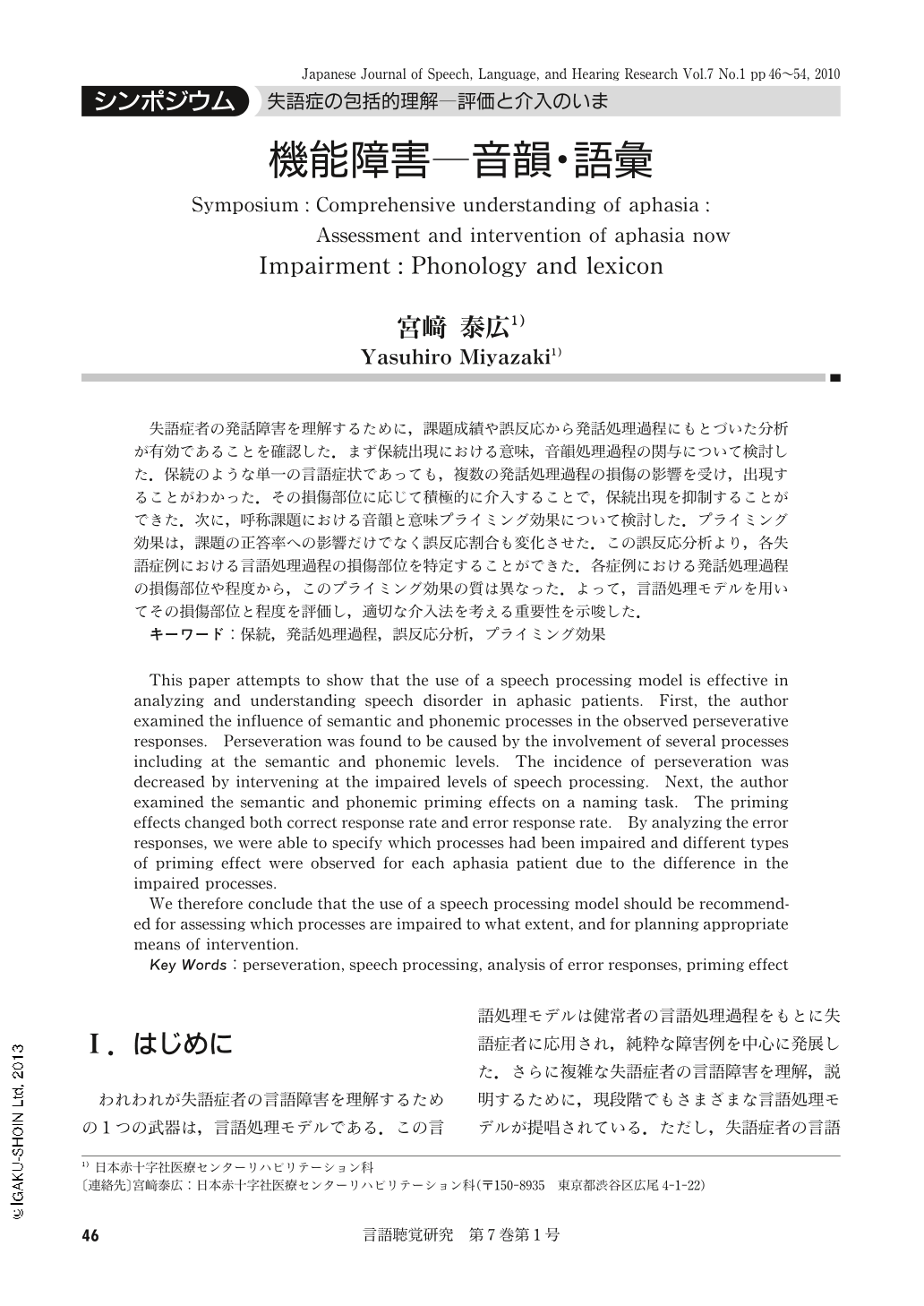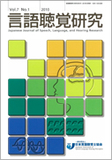Japanese
English
- 有料閲覧
- Abstract 文献概要
- 1ページ目 Look Inside
- 参考文献 Reference
失語症者の発話障害を理解するために,課題成績や誤反応から発話処理過程にもとづいた分析が有効であることを確認した.まず保続出現における意味,音韻処理過程の関与について検討した.保続のような単一の言語症状であっても,複数の発話処理過程の損傷の影響を受け,出現することがわかった.その損傷部位に応じて積極的に介入することで,保続出現を抑制することができた.次に,呼称課題における音韻と意味プライミング効果について検討した.プライミング効果は,課題の正答率への影響だけでなく誤反応割合も変化させた.この誤反応分析より,各失語症例における言語処理過程の損傷部位を特定することができた.各症例における発話処理過程の損傷部位や程度から,このプライミング効果の質は異なった.よって,言語処理モデルを用いてその損傷部位と程度を評価し,適切な介入法を考える重要性を示唆した.
This paper attempts to show that the use of a speech processing model is effective in analyzing and understanding speech disorder in aphasic patients. First, the author examined the influence of semantic and phonemic processes in the observed perseverative responses. Perseveration was found to be caused by the involvement of several processes including at the semantic and phonemic levels. The incidence of perseveration was decreased by intervening at the impaired levels of speech processing. Next, the author examined the semantic and phonemic priming effects on a naming task. The priming effects changed both correct response rate and error response rate. By analyzing the error responses, we were able to specify which processes had been impaired and different types of priming effect were observed for each aphasia patient due to the difference in the impaired processes.
We therefore conclude that the use of a speech processing model should be recommended for assessing which processes are impaired to what extent, and for planning appropriate means of intervention.

Copyright © 2010, Japanese Association of Speech-Language-Hearing Therapists. All rights reserved.


